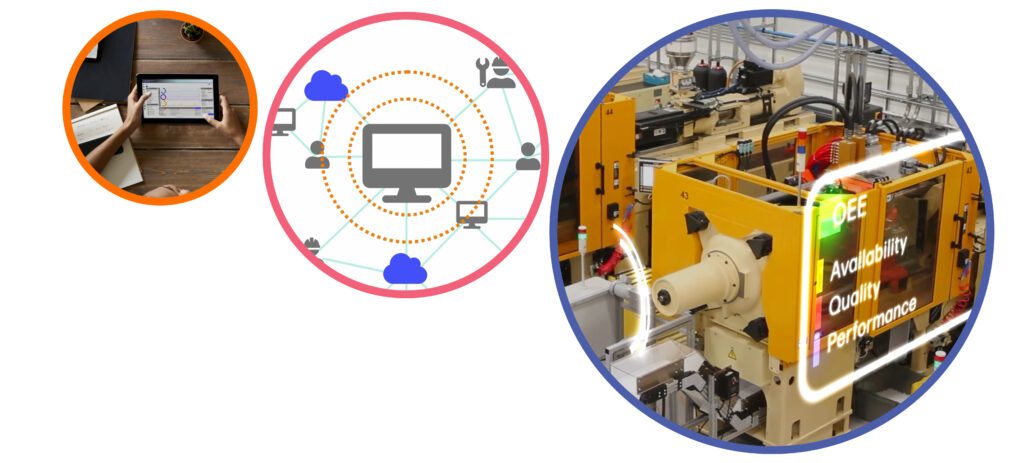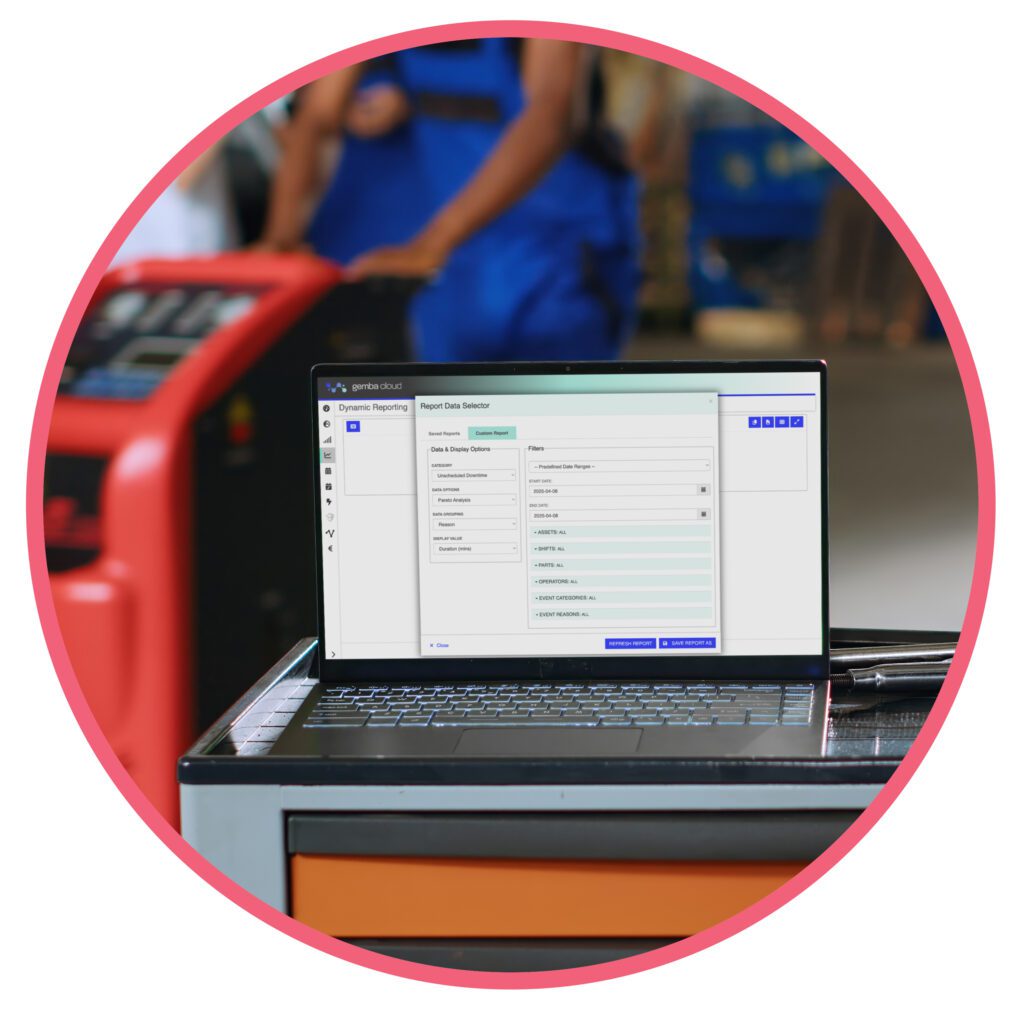
Machine uptime is critical in manufacturing. Every minute of downtime means lost production, increased costs and potential delays. But how can manufacturers improve uptime without costly upgrades?
The answer lies in OEE monitoring. By tracking Overall Equipment Effectiveness (OEE) in real time, businesses can identify performance issues, reduce downtime and optimise machine efficiency.
In this blog, we’ll explore simple, effective ways to improve machine uptime using OEE monitoring – helping you maximise production with minimal disruptions.
What is OEE monitoring?

OEE monitoring involves tracking real-time data on machine availability, performance and quality. It helps manufacturers measure how efficiently their equipment is running and highlights areas for improvement.
By continuously monitoring OEE metrics, businesses can:
- Detect early warning signs of machine failures
- Reduce unplanned downtime
- Optimise maintenance schedules
- Improve overall production efficiency
With the right strategies, OEE monitoring becomes a powerful tool for improving uptime and reducing operational disruptions.
Simple ways to improve machine uptime with OEE monitoring

-
Use real-time data to detect performance issues
Problem:
Many manufacturers rely on manual checks, which means issues often go unnoticed until machines break down.
Solution:
- Implement OEE monitoring software to track machine performance in real time.
- Set up alerts for slow-running equipment, allowing early intervention.
Analyse historical OEE data to identify recurring issues. - Real-time data ensures operators and managers can respond immediately to potential problems – keeping machines running longer.
-
Implement predictive maintenance
Problem:
Reactive maintenance (fixing equipment only after it breaks) leads to frequent, costly downtime.
Solution:
- Use OEE monitoring to track machine health and schedule maintenance before failures occur.
- Analyse downtime trends to predict which machines are likely to fail next.
- Reduce unnecessary maintenance – only servicing machines when needed.
Predictive maintenance helps manufacturers avoid unexpected breakdowns, keeping uptime high.
-
Reduce setup and changeover times
Problem:
Excessive time spent on setups and product changeovers reduces uptime and efficiency.
Solution:
- Use OEE data to measure and optimise setup times.
- Standardise best practices to speed up changeovers.
- Train operators to execute faster, more efficient changeovers.
By reducing non-productive time, manufacturers can increase machine availability and boost uptime.
-
Minimise production bottlenecks
Problem:
A single slow machine can cause delays across the entire production line.
Solution:
- Monitor OEE performance scores across all equipment.
- Identify and fix slow-running machines that create bottlenecks.
- Rebalance workloads to ensure consistent production flow.
By optimising performance across all machines, manufacturers increase uptime and prevent disruptions.
-
Improve operator training and engagement
Problem:
Operators who lack proper training may use machines inefficiently, leading to breakdowns and extended downtime.
Solution:
- Use OEE monitoring to identify common operator errors.
- Provide real-time performance feedback to employees.
- Conduct regular training sessions on best practices for uptime improvement.
A well-trained workforce reduces human errors, ensuring machines run efficiently with minimal stoppages.
The role of OEE software in improving uptime
Using OEE software makes tracking machine uptime easier by:
- Automatically collecting performance data from all machines
- Sending instant alerts when downtime occurs
- Identifying inefficiencies to prevent future issues
- Providing actionable insights for continuous improvement
By implementing OEE software, manufacturers can monitor machine uptime more effectively and take proactive steps to reduce downtime.
To conclude…
Improving machine uptime doesn’t always require expensive new equipment. By leveraging OEE monitoring, manufacturers can:
- Track real-time machine performance
- Implement predictive maintenance to prevent failures
- Reduce setup times and production bottlenecks
- Train operators for better machine handling
These simple yet effective strategies can dramatically increase uptime, ensuring a more efficient, productive manufacturing environment.





